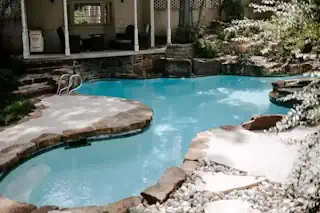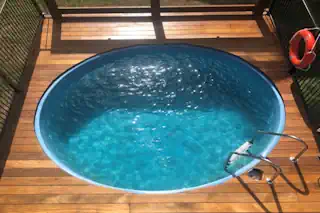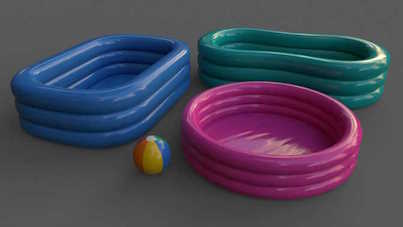Automatic Swimming Pool Vacuums Guide
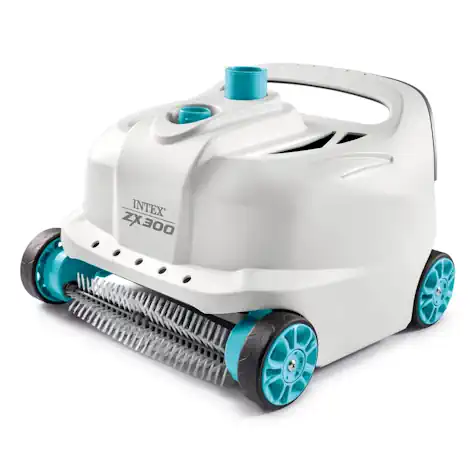
Introduction
Having a swimming pool in your backyard is no doubt a great way to relax during summer or to exercise anytime you want. However, maintaining cleanliness in your pool is equally important since it can be the deciding factor between enjoying your pool or getting sick from bacteria and contaminants. Manual pool cleaning is very effective but it can be very tiring and time-consuming. Nowadays, automatic pool vacuums are gaining popularity among pool owners because they can automate the cleaning process, thus saving time and effort. The following sections will explain why automatic pool cleaners are worth considering.
Why Choose Automatic Pool Cleaners?
Manual vs. Automatic Cleaning
Manual pool cleaning involves using handheld equipment like skimmers, brushes, and manual vacuums. While effective, it requires significant time and physical effort. In contrast, automatic pool cleaners are designed to clean your pool with minimal intervention, allowing you to focus on enjoying your pool rather than maintaining it.
Advantages of Automatic Pool Vacuums
Time-Saving: Set it and forget it—automatic pool vacuums can run on their own, freeing up your time for other activities.
Energy Efficiency: Many modern models are energy-efficient, ensuring you get a clean pool without a spike in your energy bills.
Consistent Cleaning: These devices can clean areas that are often missed in manual cleaning, ensuring a more thorough job.
User-Friendly: They’re designed to make your life easier with simple programming and easy maintenance.
Types of Automatic Pool Vacuums
Understanding the different types of automatic pool cleaners can help you make an informed choice. Here’s a breakdown:
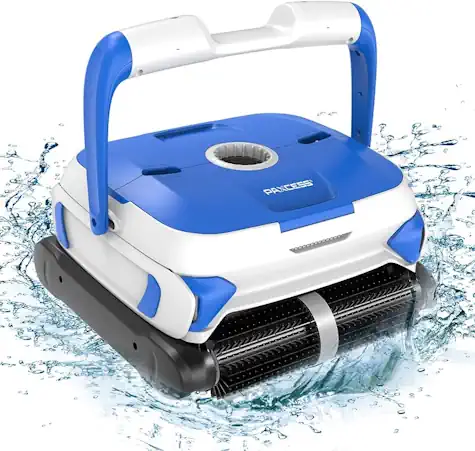
Suction-Side Pool Cleaners
Suction-side vacuums attach to your pool’s existing filtration system. They move around the the pool surface using the suction created by the pool pump, collecting debris and sending it to the filter.
Pros: Generally more affordable.
Cons: This can put additional strain on your pool’s filtration system.
Pressure-Side Pool Cleaners
These vacuums use water pressure from a dedicated booster pump to move around and clean the pool. They have their own filter bags, which reduce the load on your pool’s filtration system and cleaner itself.
Pros: Efficient cleaning and less strain on the pool filter.
Cons: Typically more expensive and may require a booster pump.
Robotic Pool Cleaners
Robotic vacuums are self-contained robotic cleaner units with their own filtration system. They use advanced algorithms to navigate and clean the pool thoroughly.
Pros: Superior cleaning performance and energy efficiency.
Cons: Higher upfront cost.
How to Choose the Right Automatic Pool Vacuum
Selecting the perfect automatic cleaner involves considering several factors:
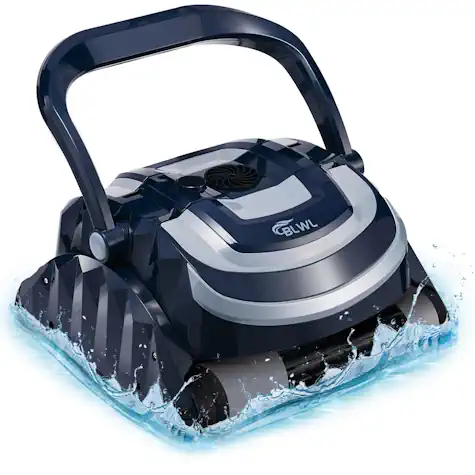
Pool Size and Shape: Larger pools may benefit from more powerful robotic vacuums, while smaller pools could suffice with suction-side models.
Pool Type: The material and surface of your pool can impact the effectiveness of certain vacuums.
Budget: Determine your budget and weigh it against the features and benefits you desire.
Personal Preferences: Consider ease of use, maintenance requirements, and any additional features you might find useful.
Tips for Making an Informed Decision
Read Reviews: User reviews can provide insight into the performance and reliability of different models.
Consult Experts: Don’t hesitate to ask for professional advice to find a cleaner that best suits your needs.
Avoid Common Pitfalls: Be wary of overly cheap models that may not offer the durability or performance you need. Cheap models may work great on the pool floor but never get to the walls.
Top Automatic Pool Cleaners on the Market
Here are some of the leading brands and models that pool owners rave about:
Dolphin Nautilus CC Plus: Known for its powerful cleaning capabilities and user-friendly design.
Polaris Vac-Sweep 360: A reliable pressure-side vacuum that offers excellent performance.
Hayward AquaNaut 400: A robust suction-side vacuum that’s perfect for various pool surfaces.
Zodiac MX6: Compact yet efficient, ideal for smaller pools.
Pentair Kreepy Krauly Prowler 920: A high-performance robotic vacuum with a reputation for thorough cleaning.
Installation and Maintenance Tips
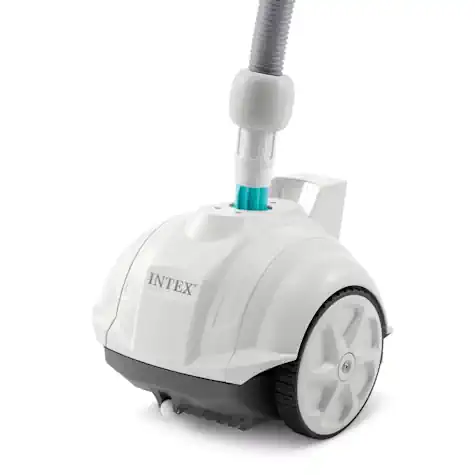
Setting Up Your Automatic Pool Cleaner
Read the Manual: Follow the manufacturer’s instructions for setup.
Assemble the Cleaner: Ensure all parts are correctly assembled.
Connect to the Power Source: For robotic vacuums, plug them in; for suction or pressure-side vacuums, connect to the pool’s system.
Program the Cleaner: Adjust settings according to your pool’s size and cleaning needs.
Test Run: Always conduct a test run to ensure everything is functioning correctly.
Regular Maintenance
Clean Filters and Bags: Regularly empty and clean filters or bags to maintain optimal performance.
Inspect for Wear and Tear: Periodically check for worn-out parts and replace them as needed.
Store Properly: When not in use, store your vacuum in a dry, shaded area to prolong its lifespan.
Conclusion
Automatic pool vacuums offer a convenient and efficient solution to maintaining a sparkling clean pool. With various types available, each offering unique features and benefits, there’s sure to be a model that fits your specific needs.
Investing in an automatic pool cleaner or vacuum not only saves you time and effort but also ensures a consistently clean and inviting pool environment. Whether you’re a busy homeowner or a pool enthusiast, this technology can significantly enhance your pool maintenance routine.
FAQ
How often should I run my automatic pool vacuum?
It generally depends on factors like pool usage, your pool system, the surrounding environment, and the pool cleaner type or vacuum you own. However, running your automatic pool vacuum a few times a week is typically sufficient for most pools. During heavy usage periods or after a storm, you may want to run it more frequently.
Can I leave my pool cleaner in the pool all the time?
While some automatic pool vacuums are designed to be left in the water, it’s a good idea to check the manufacturer’s guidelines. Constant exposure to pool chemicals can potentially shorten the lifespan of some components. Suction-side pool cleaners may also place additional strain on the pool’s pump if left running continually. Always store your ground pool vacuum properly when not in use to maximize its durability.
Do automatic pool vacuums work on all pool surfaces?
Most automatic pool vacuums are versatile and can work on various surfaces, including concrete, vinyl, and fiberglass. However, it’s essential to choose a model that’s compatible with your pool’s surface for optimal performance. Refer to the manufacturer’s specifications for guidance.
Are robotic pool vacuums worth the investment?
A robotic pool cleaner is often more expensive upfront but provides superior cleaning performance, energy efficiency, and convenience. They can be a worthwhile investment if you have a large pool or prefer minimal maintenance effort. Their advanced remote control features and thorough cleaning efficiency make them a valuable addition to any pool maintenance routine.
How do I know which type of automatic pool cleaner is best for my pool?
Consider factors such as your pool size, type, and budget in your pool clean-up decision-making process. Suction pool cleaners are generally more affordable and better for smaller pools, while pressure-side and robotic vacuums offer more powerful cleaning performance suitable for larger pools. Reading reviews and consulting pool maintenance experts can also help you make an informed choice.
What should I do if my vacuum stops working properly?
First, consult the user manual for troubleshooting tips and ensure the vacuum is correctly assembled and connected. Common issues can often be resolved through simple maintenance like cleaning filters or removing debris. If problems persist, reach out to the manufacturer’s customer support for further assistance.
How do I maintain my automatic pool cleaner?
Regular maintenance is key to keeping your pool vacuum in top shape. Clean the filters and bags regularly, inspect for worn-out or damaged parts, and store the vacuum properly when not in use. Following the pool cleaner manufacturer’s maintenance recommendations will help prolong the lifespan of your device and ensure consistent performance.

